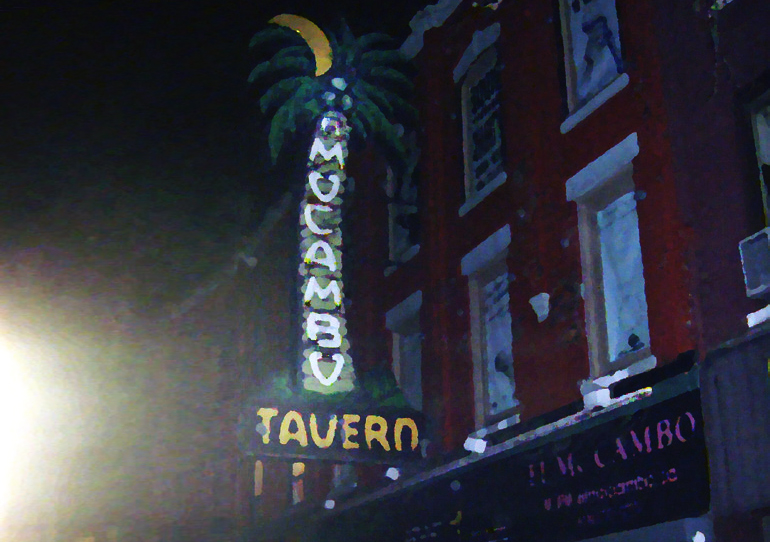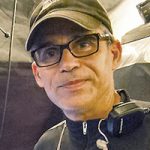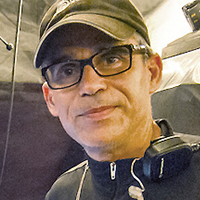During the 1980s, and in particular in the latter half of the decade, I was in and out of Toronto’s storied El Mocambo Tavern for various gigs. These consisted of everything from subbing for the house sound person to mixing bands I was working with to working on live recording events to mixing monitors for various bands.
There was no house monitor rig (except for wedges from front of house for most acts) so this always involved bringing in a system and interfacing it with the house set-up. It’s all a bit blurry now but I remember doing shows with bands such as Girl’s School and the Joe Perry Project as well as the subject of today’s article, The Killer Dwarfs.
The show in question was to mark the release of the group’s first album and was, of course, a very big deal for them. For me, it was a pretty normal day, loading in the monitor rig and getting it set up.
The system consisted of a locally made (by GERR Audio, now the Canadian DiGiCo distributor) 18 x 7 monitor console, an EQ rack, an amp rack and some wedges built by a local sound company. I don’t recall ever hearing a reason why someone would build a desk with seven mixes, but at 18 channels, it was actually one of the larger monitor desks around. In any case, the club had a 20-channel snake, and my monitor split was a 19-pair, so what could go wrong?
Limited Interaction
One of the twists on this gig was that the stagebox, such as it was, was located upstage left, and the monitor mix position was located downstage and just offstage right, so the monitor splay had to run all the way across the front of the stage. There was no “backstage” – the stage being just a kind of box-riser platform that was about 15 inches high, pushed up against the back wall of the club.
The setup went fine, albeit with very minimal interaction with the band’s crew. I think that a separate monitor mix was still kind of a novelty for them so they weren’t thinking about it much, instead preoccupied with getting things just right for the big night.
In fact, my only interaction with their crew was asking the young backline person if the one, solitary [Shure] SM58 on a straight stand, stage right (just a few feet in front of my console) was the band’s only vocal mic. He assured me that it was in fact their only vocal mic. Just to make sure, I asked him a second time and got the same reply, so I got to work and EQ’d the rig, a very quick and easy job because the mic was such a short walk from my office.
Next up was sound check, which went fine and fairly quickly, again with minimal interaction with the band and crew. That done, it was the usual “killin’ time until show time” routine, dinner next door at the Saigon Palace and then hanging around by the monitor desk until the show started.
This being a showcase, there was no opening act so things got underway around 9 pm when a young woman leapt onto the stage and made a beeline for the one vocal mic. Not having been briefed on anything (I don’t recall there being a stage manager), I was just trying to decide if I should do something about this, when she started introducing the band.
Oh! She was from the local rock station…
Stuff Got Real – Fast
After her introduction, the band took the stage and things got loud – and interesting – all at once. I quickly checked all of my mixes, or at least I started to, before the backline person was leaning over the monitor desk (and blocking my view of the stage) screaming at me, “He Can’t Hear Himself! He Can’t Hear Himself!” to which I asked, “Who can’t hear himself?” and he yelled back “The Singer! The Singer Can’t Hear Himself!”
A quick glance at the stage showed me that the lone SM58 was still in its stand, un-used, so I shouted back, “There’s No One Singing On That Microphone!”
He countered: “Not That Microphone – His Wireless!”
My stunned response: “What Wireless?!”
So, as it turned out, the singer, who had not been at sound check, had his own wireless microphone, a cherished possession which happened to be something like a “Mr. Microphone” that also required a user-supplied FM tuner in order to even work. This also happened to be plugged into channel 19 or 20 on the house snake – so I hadn’t taken the split!
I quickly went tearing past the front of the stage in the “roadie crouch,” made my way back to the stagebox, found the input and moved one of my split lines there, and then tore back to the monitor desk to get his wireless mic dialed into all of the wedges. From there, the rest of the show went just fine.
After the show and right up to the present time, almost 40 years later, I’ve been asking myself how it was that I could miss something like that. At the time, I realized that I had noticed the FM tuner sitting on the stage in front of the kick drum, mostly out of the corner of my eye as I was making one of my trips between the monitor desk and the stagebox, and of course wondered what it was doing there.
I also realized that I’d overheard the word “wireless” go by in conversation a couple of times while the band was setting up. But I never saw it and definitely never heard it, and, apparently my doing the due diligence of asking, twice, if the one mic on stage was their only vocal mic wasn’t quite enough to get the whole story.
In any case, the band had a great night and went on to a pretty successful career. No one ever mentioned this incident to me either, so I guess it’s just another one of those rock ‘n’ roll moments, live from the El Mocambo.















